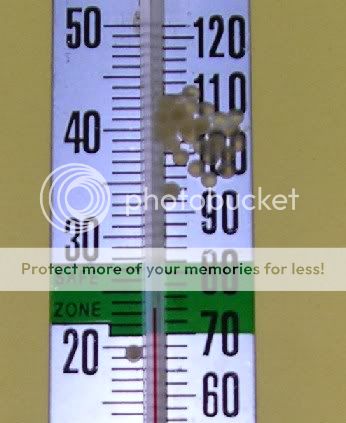Hi,
I need some expert help to try to pinpoint a problem....
I'm repeatedly losing C.Habrosus fry and cannot see what is wrong. The most puzzling deaths occur at about 10-14 days after hatching.
So far there were five attempts (they provide eggs regularly), with the following outcomes:
Hatch 1: 6 fries out 10 eggs, all suddenly die at 2 week mark.
Hatch 2,3: many bad eggs, little fry dies at the time of hatching (likely contamination from bad eggs, this problem solved)
Hatch 4: 11 out 15 eggs, 2 deaths in the first two days, 4 died since yesterday night. (After each death, full container and water change, trying to save the rest, this worked after first two losses, did not help yesterday).
Hatch 5: so far 17 out of 22 eggs,.... these I'd like to try to save.
Feeding: filter squeeze+microworms for three days after yolk sac has been consumed, then switch to artemia. At the time of death, fish has been active and eating artemia for several days.
Water changes 30%-50% daily.
Container: Plastic, footprint slightly larger than that of a 2.5g, 1"-2" water depth. Bare bottom. Airline, but no filter.
I simply cannot see what can be wrong .. perhaps someone else has an idea?
Incidentally, I use exactly the same technique with C.Panda, without a problem -- some fry may die soon after hatching, but once they start eating artemia, they are stable.
Thanks!
I need some expert help to try to pinpoint a problem....
I'm repeatedly losing C.Habrosus fry and cannot see what is wrong. The most puzzling deaths occur at about 10-14 days after hatching.
So far there were five attempts (they provide eggs regularly), with the following outcomes:
Hatch 1: 6 fries out 10 eggs, all suddenly die at 2 week mark.
Hatch 2,3: many bad eggs, little fry dies at the time of hatching (likely contamination from bad eggs, this problem solved)
Hatch 4: 11 out 15 eggs, 2 deaths in the first two days, 4 died since yesterday night. (After each death, full container and water change, trying to save the rest, this worked after first two losses, did not help yesterday).
Hatch 5: so far 17 out of 22 eggs,.... these I'd like to try to save.
Feeding: filter squeeze+microworms for three days after yolk sac has been consumed, then switch to artemia. At the time of death, fish has been active and eating artemia for several days.
Water changes 30%-50% daily.
Container: Plastic, footprint slightly larger than that of a 2.5g, 1"-2" water depth. Bare bottom. Airline, but no filter.
I simply cannot see what can be wrong .. perhaps someone else has an idea?
Incidentally, I use exactly the same technique with C.Panda, without a problem -- some fry may die soon after hatching, but once they start eating artemia, they are stable.
Thanks!

